The following observations were made in the town of Martin Muñoz De Las Posadas in Old Castille.
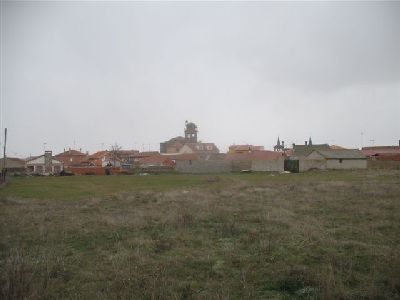
Throughout Leon and Castille, in the areas originally forested by native black pine, all rural residences were, and to an extent still are, heated by a form of Hypocaust called Glorias Castillanas.
Said by all locals to be Una cossa Romana, the Gloria was presumably introduced to the peninsula during the 500 years of Roman occupation, starting in 19 BC.
All dwellings of the region built prior to 1960 were originally heated by a Gloria, though today only a fraction of those still maintain and use these Hypocausts. Some houses built after the 60s and up until the present day use a Gloria as their primary heat source.
The Glorias began to be left idle with the introduction of considerably more convenient oil and gas fired heating systems. Due to the current economic crisis effecting Spain, many locals are building new house with Glorias. As the Gloria is a sub floor system, with an exterior fire box, whether used or not, its form does not effect the ergonomics of the dwelling, providing a 'sleeping' back up system that can be fired in emergencies. Unlike Scandinavian stoves which were demolished en mass with the advent of central heating, the disused Glorias are still serviceable.
The Gloria consists of a sub floor smoke path which connects a fire box on the outside of one foundation wall of the house to a chimney on the exterior of an opposing wall. The orientation of the flue, or flues, between fire box and chimney seems to be arbitrary. The floors of the house cover the whole Hypocaust, the builder being the only person aware of the specifics of the smoke path. An idea of orientation can be had by feeling for warmth on the floor of the house, by consulting with the owner, or actually crawling into the smoke path.
Though well known as a heating system in Roman public buildings throughout the empire, only in Leone and Castille has the Hypocaust been used for residential heating on such a large scale. The reasons for this are: Being remote from the modifying influence of the sea, and at relatively high altitude, the region is, unlike other areas of the peninsula, cold and dry in winter. This means that the Gloria can not be flooded and that its masonry does not become damp, thus reducing overall efficiency.
Traditionally Glorias burnt only dry pine needles, scraped from the forrest floor. The needles have no other use other than fuel, saving wood for cooking, and grass for animal fodder. Pine cones are used as kindling to start the fire. The historical limit of the black pine within the region dictated the areas in which the Gloria has been used.
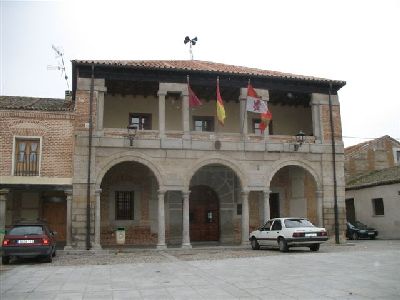
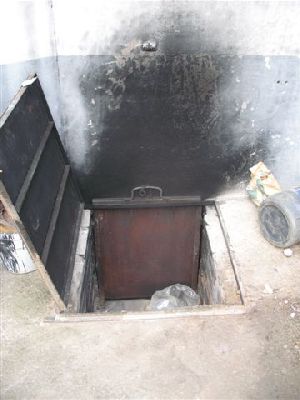
The fire box is below grade, its access opening being covered with a metal door, seen here in the open position.
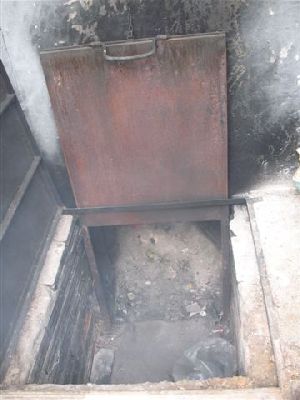
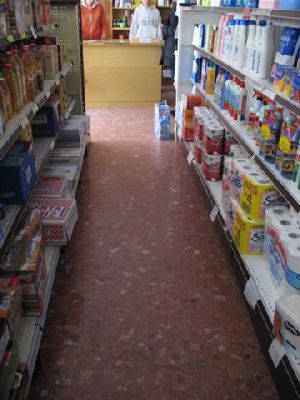
The operator of the Gloria said that its smoke path consisted of a straight flue from fire box to the chimney. Running of each side, at the same point, from this flue are two flues of equal capacity to the central flue. The side flues run out at a shallow angle before turning back and rejoining the central flue just before the chimney connection. The floor directly beneath the camera was very hot to touch, with the floor around the counter in the background being considerably cooler.
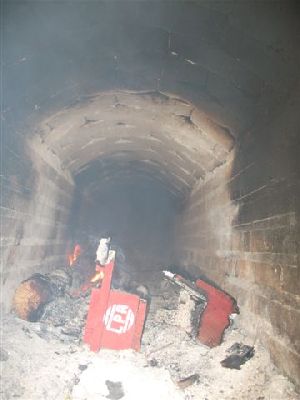
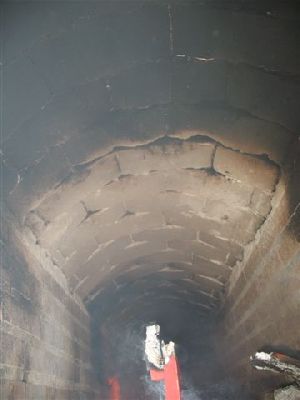
The little cleaning necessary is done by crawling in to the tunnel with a sweeping brush.
Closer inspection was not possible due to the fire being lit.
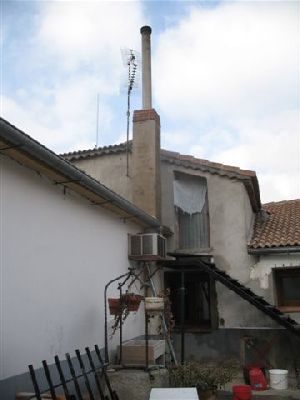
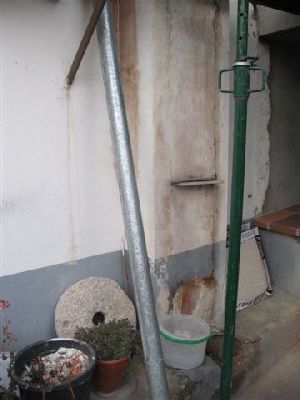
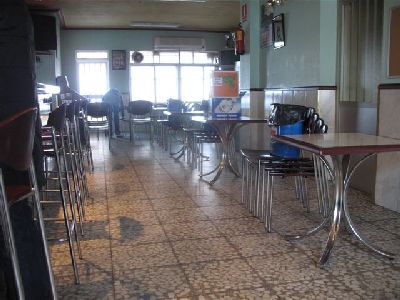
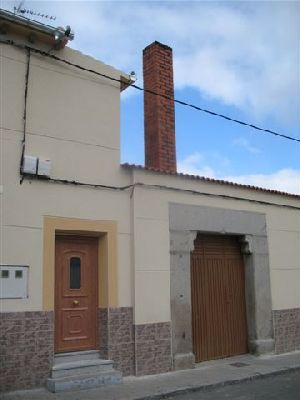
Startup of the first fire of the season is not always easy, though once operating, ambient temperature will insure thermo-syphoning.
A local building contractor told of Glorias with multiple fire boxes and smoke paths that heated more than one dwelling.
The primary disadvantage of the Glorias is their uneven temperature, being extremely hot just above the fire box, and considerably cooler towards the end of the smoke path. Some Glorias are fitted with a manually operated deflector shield, located at the point at which the channel divides into to two. Operated by a rod from the fire box the deflector allows heating of only one channel, or alternated heating, rather than heating both flues at once.
See also:
![]()

![]() CLM en Vivo: Calefacción mediante Gloria, Mascaraque (17-11-2009) (Video, 5 Mins 25 Secs, Espagnol)
CLM en Vivo: Calefacción mediante Gloria, Mascaraque (17-11-2009) (Video, 5 Mins 25 Secs, Espagnol)
![]() Viviendas Ondol (Espagnol)
Viviendas Ondol (Espagnol)
